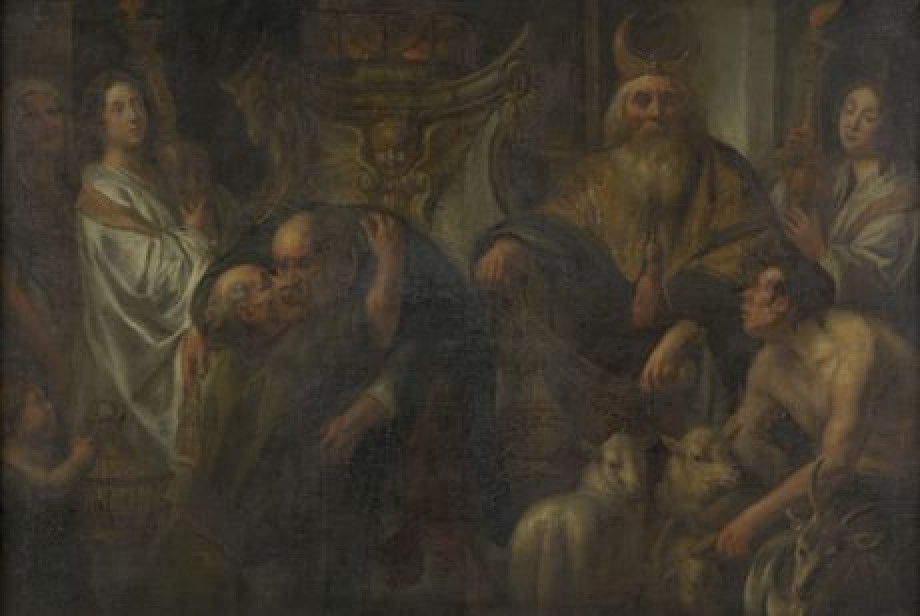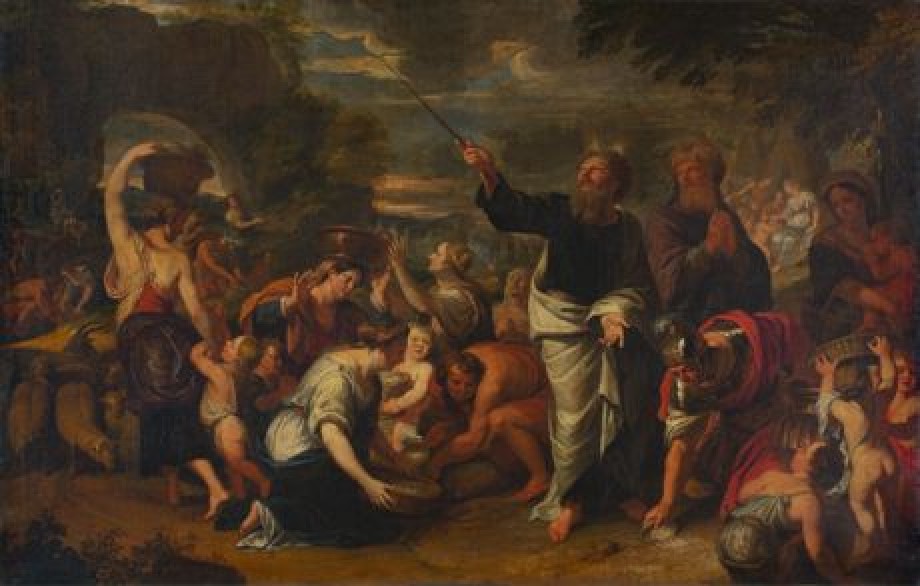Christ and the Adulteress

Date
ca. 1670Period
17 centuryCollection
Museum of Fine Arts Ghent
After 1640, after the death of Rubens, the reputation of Jacob Jordaens grew in importance. The same was true of his commissions, which forced the artist to surround himself with collaborators. It is known that from this time onwards, Jordaens left it to his studio to transpose onto canvas the compositions that he himself had drawn. Once the work had…
Read more
After 1640, after the death of Rubens, the reputation of Jacob Jordaens grew in importance. The same was true of his commissions, which forced the artist to surround himself with collaborators. It is known that from this time onwards, Jordaens left it to his studio to transpose onto canvas the compositions that he himself had drawn. Once the work had been transposed, he took over and completed certain parts of the whole. Many of the paintings produced in collaboration with the studio were merely repetitions with variations of themes already exploited, such as The Allegory of Fertility. The same applies to Christ and the Adulteress, which comes from the Abbey of St Peter in Ghent. Jordaens had already exploited this theme on several occasions. The theme of Christ and the adulteress from the Gospels of Luke and John is of great importance in the post-Tridentine religion. Indeed, Christ's refusal to judge the woman according to the Mosaic law and suggesting to the one who has never sinned to throw the first stone to stone the sinner symbolises the divine leniency in the face of humanity's faults. The museum owns a preparatory drawing by Jordaens for this painting (inv. 1908-B-recto). This sketch shows a similar composition, except for a few details, such as the woman carrying a basket on her head, which is absent from the finished painting. As in many of the works produced by the artist and his workshop during the 1660s and 1670s, the colouring is darker, dominated by brown, the chromatic contrasts are more strongly contrasted and the brushstrokes looser.
Read less











